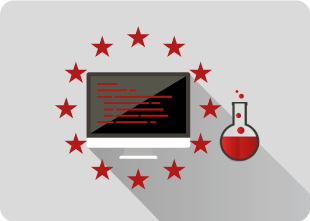
SCIP-Meldung – SVHC-Daten rechtssicher erfassen und weitergeben
Unternehmen müssen Informationen zu besonders besorgniserregenden Stoffen (SVHC) in Erzeugnissen an die SCIP-Datenbank der ECHA melden. Diese Pflicht ergibt sich aus der Novellierung der europäischen Abfallrahmenrichtlinie (2008/98/EG) und wurde in Deutschland durch § 16f Chemikaliengesetz (ChemG) umgesetzt.
Ziel der SCIP-Meldung
Die SCIP-Datenbank (Substances of Concern In articles, as such or in complex objects – Pro-ducts) dient der Bereitstellung von Informationen zu SVHC in Erzeugnissen – für:
- Abfallbehandler, um Recycling- und Entsorgungsverfahren sicherer zu gestalten
- Behörden, zur Marktüberwachung
- Verbraucher:innen, zur Information über Schadstoffe in Produkten
Die Datenbank ist öffentlich zugänglich und wird von der ECHA verwaltet.
Wer ist meldepflichtig?
Die Meldepflicht gilt für:
- Hersteller mit Sitz in der EU
- Importeure von Erzeugnissen in die EU
- EU-Händler, wenn sie Produkte unter eigenem Namen weitergeben
- Akteure der Lieferkette, die ein SVHC-haltiges Erzeugnis erstmals in Verkehr bringen
Unternehmen, die direkt und ausschließlich an Verbraucher liefern, sind nicht betroffen. Die Meldung kann auch durch einen beauftragten Dritten erfolgen.
Wann ist zu melden?
Eine Meldung muss erfolgen, wenn ein Erzeugnis einen Stoff aus der aktuellen Kandidatenliste der ECHA in einer Konzentration von mehr als 0,1 Massenprozent enthält. Maßgeblich ist dabei jedes einzelne Erzeugnis, auch wenn es Teil eines komplexen Produkts ist. Werden Stoffe neu in die SVHC-Kandidatenliste der ECHA aufgenommen, muss die Meldung beim ersten Inverkehrbringen nach der Listung erfolgen.
Typische Herausforderungen
Die größten Hürden stellen sich oftmals ganz am Anfang des Prozesses im Zuge der Datenbeschaffung und -aufbereitung ein. Insbesondere komplexe Erzeugnisse oder Produkte aus unübersichtlichen Lieferketten führen zu hohem Aufwand, wenn die Lieferanten oft nur unvollständige oder unstrukturierte Informationen übermitteln. Im nächsten Schritt müssen die Produktdaten dann zusammen mit weiteren Begleitinformationen korrekt in das SCIP-Meldesystem mittels IUCLID Software überführt werden.
Unsere Unterstützung
Wir begleiten Sie bei allen Schritten der SCIP-Meldung:
- Prüfung von Produkten auf Meldepflicht
- Unterstützung bei der Detektion relevanter SVHC
- Abfrage und Bewertung lieferantenseitiger Informationen
- Strukturierung und Gruppierung komplexer Erzeugnisse
- Durchführung der Meldung über das ECHA-System in Ihrem Auftrag
